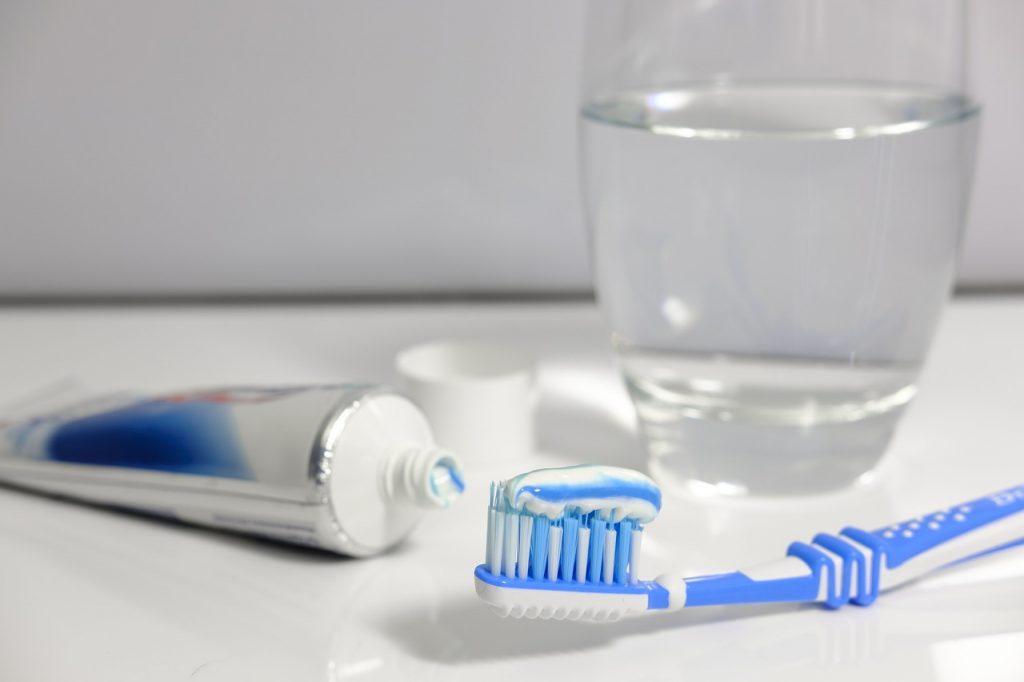My 10-year-old son recently had a palate expander, an oral device used to widen a narrow upper jaw, fit in the roof of his mouth. The orthodontist applies a fluoride-releasing adhesive to prevent caries (tooth decay) and reduce the level of demineralisation near the orthodontic brackets. Fortunately, tooth decay can be prevented. Beyond good oral hygiene and diet, chemical measures like fluoride are critical in strengthening teeth against decay.
Tooth decay, also known as dental caries, refers to the process that can eventually lead to holes in the teeth, cavities. It is the most common chronic disease affecting both children and adults despite being largely preventable. Partly due to the divide between the fields of medicine and dentistry, caries are not commonly regarded as a chronic disease.
The benefits
Tooth enamel is primarily made up of hydroxyapatite, a material easily harmed by acids. Mouth bacteria thrive on sugars, breaking them down into acids that lead to cavities. However, when fluoride is included in the diet or applied topically to teeth, it integrates into the enamel, forming fluoroapatite, a more acid-resistant substance. Additionally, fluoride can inhibit enzymes, including those that bacteria use to convert sugars into acids. Given the widespread nature of tooth decay, adding small amounts of fluoride to drinking water offers a straightforward and effective preventive measure.
In 1901, Frederick McKay established a dental practice in Colorado Springs, Colorado, and quickly observed that many of his patients had stained or mottled teeth, a condition now known as fluorosis. Surprisingly, those with this condition also had very few cavities. The cause was identified as an unusually high level of fluoride in the local drinking water.
McKay’s discovery prompted studies comparing the dental health of communities with varying fluoride levels in their water supply. It was found that with natural fluoride levels of up to 1.0 part per million (ppm) in drinking water, cavity rates dropped by approximately 50-65%, and causing only mild enamel fluorosis in a small percentage of people. Based on these findings, the World Health Organization began recommending fluoride supplementation in areas with low natural fluoride levels.
Currently, around 6 million people in England live in areas with water fluoridation schemes, mainly in the West Midlands and the North East. If you reside in the US, you are likely drinking tap water enhanced with fluoride, as local governments have been adding fluoride to municipal water systems. According to the Centers for Disease Control and Prevention (CDC), this practice has been a notable public health achievement, reporting that fluoridated water reduces tooth decay by 25%.

While fluoride can be obtained from sources like toothpaste, adding fluoride to drinking water ensures equal access to essential health measures for everyone in society; for the same reason, iodine is added to salt and folic acid to grains. While suggesting “just buy toothpaste” for those with a stable income is simple, access to dental care remains out of reach for many. Fluoridating water is the most economical way to provide fluoride to the population.
The arguments
Despite its benefits, fluoridation has been a focal point for misinformation and conspiracy theories. Among its most recent outspoken critics is Robert F. Kennedy Jr, a well-known anti-vaccine advocate and critic of COVID-19 protection measures. In a comment on November 2, Kennedy argued for banning fluoridation to safeguard children from potential neurodevelopmental issues and other health problems, often citing its industrial origins. While he might be accurate about its origin, the CDC’s recent statement counters the health concerns raised by Kennedy, emphasising that the only potential risk is fluorosis resulting from prolonged exposure to excessive fluoride.
Discussions about fluoride toxicity often ignore the principle that toxicity depends on the dose. “The dose makes the poison” is a fundamental concept in toxicology. Dentists argue that the benefits of introducing fluoride into community water supplies in carefully regulated amounts outweigh the harms.
The NIH states that excessive fluoride exposure, usually from rare incidents involving abnormally high levels of fluoridated water or accidental swallowing of fluoride dental products meant for external use, can lead to symptoms like nausea, vomiting, abdominal pain, diarrhoea, periostitis and, in extreme cases, death. However, the NIH emphasises that reaching such a high dose from water or toothpaste with typical fluoride concentrations would be nearly impossible.
Another recent argument from the anti-fluoridation movement is that fluoride lowers IQ in children, based on a recent review from the US National Toxicology Program. Other than the fact that IQ tests are considered unreliable in predicting cognitive performance, prone to various biases, and largely viewed unfavourably in modern times, the studies in the review indicating a link to lower IQ frequently compare the average IQ of children in areas with water fluoridation programs to those in non-fluoridated regions, without accounting for the numerous other factors that can influence test results. Furthermore, the focus was on extremely high fluoride levels in drinking water, concentrations exceeding 1.5 mg/L, more than twice the amount found in water supply.
Fluorosis is the only clearly established health risk, characterised by pearly white lines on the surface of the teeth, and is purely cosmetic rather than dangerous. The NIH states that researchers, including those involved in a review by the National Academies of Sciences, Engineering, and Medicine, believe the evidence linking higher fluoride intake during early development to lower IQ and other cognitive impairments is weak and methodologically flawed.
The claim that water fluoridation infringes on personal choice is among the most compelling arguments against its implementation. Critics suggest that fluoride could remain in products like toothpaste and mouthwash, allowing individuals to decide whether to use it. While this perspective respects autonomy, it overlooks systemic inequities and the broader objectives of public health.
Public health measures are not about limiting choice but about ensuring a baseline of protection for all. For those preferring to avoid fluoride, options like bottled or filtered water are available. Meanwhile, policymakers must continue ensuring fluoridation levels remain safe and effective, addressing public concerns openly to foster trust.
Changing opinions is much more difficult when politics is involved. The narrative common to the anti-fluoridation movement asserts that corrupt elites, such as organised dentistry, have conspired with public health officials and the government to implement a hidden agenda aimed at controlling and weakening the population. According to the claim, fluoridating community water supplies represents the “perfect crime” of gradual poisoning.
Fluoride, which they claim is known for its carcinogenic effects and use as a rat poison, is said to impair the population over time, causing blurred vision, cancer, coma, and ultimately death. The gradual increase of fluoride in water is likened to the undetectable action of slow-release medication. Ironically, these arguments fail to explain why dentists, whose income might decrease with reduced cavity rates, would advocate for fluoridation.
Notably, opponents of fluoridation do not object to the presence of fluoride in toothpaste, nor do they express the same concerns about countries using fluoridated salts, despite their belief that fluoride causes numerous severe health issues. Logically, one would expect any group concerned about a substance’s potential harm to advocate for its complete removal from the environment. Instead, the anti-fluoridation movement argues that water fluoridation is unnecessary because fluoridated toothpaste provides sufficient protection against tooth decay. This suggests that the anxiety lies specifically in adding fluoride to the water supply rather than with fluoride itself.
At low levels, fluoride is safe. The studies linking fluoride to reduced IQ in children involve methodological flaws and only consider higher doses, and a judge’s ruling does not validate these claims. While continued research is valuable, it is misleading to skew the discussion by presenting the issue as more contentious than it truly is. It’s crucial to emphasise that no one supports the unsafe fluoride doses, and such levels are almost never present in community water fluoridation.
The movement to end water fluoridation highlights broader societal trends: increasing distrust in public health systems, rising concerns about persistent chemicals, and a growing movement to challenge established public health policies by shifting the responsibility for healthcare onto individuals and, in this case, parents when it comes to their children’s dental care.
Policymakers must continue to balance public trust with the collective benefits of fluoridation, fostering informed discussions that prioritise community wellbeing over fear and misinformation.



